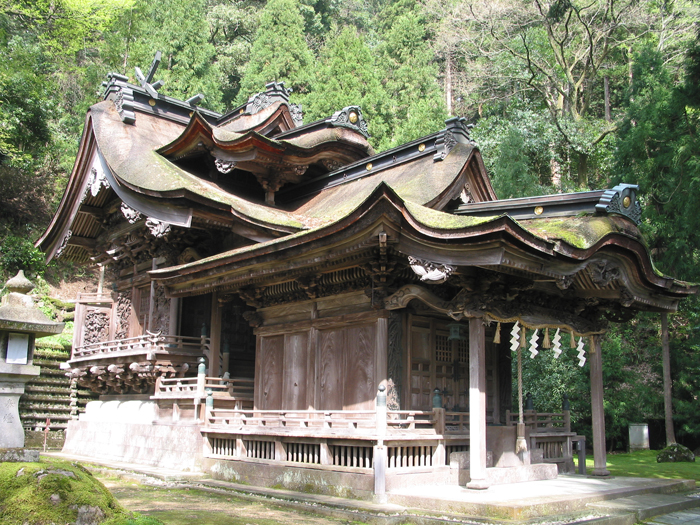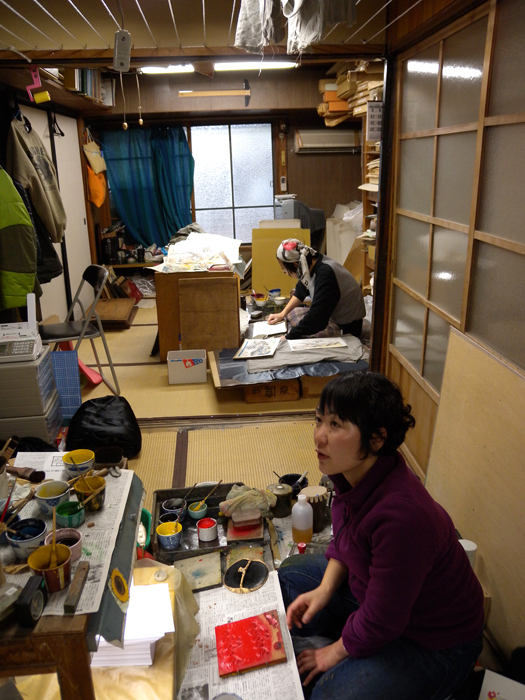We Made It: Rebecca Salter RA | reviews, news & interviews
We Made It: Rebecca Salter RA
We Made It: Rebecca Salter RA
The British artist talks about a life inspired by traditional Japanese crafts

The English abstract artist Rebecca Salter has definitely made it. A major retrospective of her work in 2011 at the Yale Center for British Art, "Into the light of things: works 1981-2010”, included more than 150 works. She was elected a Royal Academician earlier this year.
SEBASTIAN SCOTNEY: What can we in learn from the Japanese craft traditions about the importance of skill levels? Are we in danger of losing the plot in the West?
REBECCA SALTER: Japan has always placed huge cultural importance on the beautifully made object with exceptional attention to detail. This manifests itself positively in living craft traditions but sometimes negatively in a slightly rule-bound over-respectful approach which can stunt creativity. UK art schools are known internationally for their free-wheeling creative approach but it often lacks foundation in an understanding of skills and the joys and complexities of making. Over the last few years I have noticed a renewed interest in what you might old-fashioned "how to do it" skills.
Japanese woodblock printing is an activity you yourself have had a deep involvement in for three decades. What drew you to it originally?
Like so many western artists I was drawn to prints as a student because of their bold, flat colour and slightly quirky compositions. At the time I had no idea how they were made but having researched the technique and got to know many of the craftsmen I have huge admiration for their skill and versatility.
How does the future of woodblock printing in Japan look?
I persuade myself to be optimistic about the future because I have such respect for the ingenuity of the craftsmen that I believe they will hang on somehow. The problems they face are fairly fundamental; the traditional market has almost disappeared so they rely on the souvenir trade and commissions from artists/publishers. By commissioning prints for the Royal Academy Summer Show I am hoping to widen understanding of the contemporary technique outside Japan.
But surely the continuance of woodblock is something the Japanese themselves value?
It is valued to some extent but historically it was a plebeian art form so does not quite have the respect of calligraphy or the arts related to the tea ceremony.
You have a video archive of craftsmen involved in the different stages of the woodblock-printing process talking. Are their skills dying out?
I have 40 hours of video interviews with as many craftsmen as I could find. Many of them were the last in the line of their particular skill. For example I interviewed the last person in Kyoto to make and print playing cards by hand.
Could there be a documentary one day?
I did use TV quality video so in theory there could be. My problem is that I haven't had time to edit and subtitle them yet!
You interviewed one of the most celebrated paper-makers

You also interviewed one of the makers of the carving tools. What was his story? Will that craft continue?
I interviewed Shimizu Hamono in Tokyo who make carving tools and kitchen knives. This family firm used to be samurai sword polishers! They have a forge about an hour outside Tokyo but the day I visited the blacksmith working there was in his early 70s. I hope they have found an apprentice to follow him.
Tell us about the prints which are in the RA exhibition this summer. Which Japanese printing workshop did you work with?
 I decided to work with Sato Woodblock workshop in Kyoto who I've worked with before on a set of prints for my retrospective at Yale Center for British Art in 2011. Sato Keizou's father left rural western Japan in his early teens to be an apprentice in Tokyo. An apprentice would be expected to invest 10 to 15 years in learning the trade and even then only the very best would progress on to the most complex carving or printing. The others carved and printed the easy bits. Sato's father completed his apprenticeship and moved to Kyoto to set up a print workshop which is now run by his son Keizou who is 75. They are particularly skilled at reproducing in woodcut the soft Japanese-style paintings typical of Kyoto. (Pictured left: the Sato workshop with two of his apprentices)
I decided to work with Sato Woodblock workshop in Kyoto who I've worked with before on a set of prints for my retrospective at Yale Center for British Art in 2011. Sato Keizou's father left rural western Japan in his early teens to be an apprentice in Tokyo. An apprentice would be expected to invest 10 to 15 years in learning the trade and even then only the very best would progress on to the most complex carving or printing. The others carved and printed the easy bits. Sato's father completed his apprenticeship and moved to Kyoto to set up a print workshop which is now run by his son Keizou who is 75. They are particularly skilled at reproducing in woodcut the soft Japanese-style paintings typical of Kyoto. (Pictured left: the Sato workshop with two of his apprentices)
What task did you set the printers?
I went to Japan in March with two watercolours which I had painted on muslin. The challenge was to reproduce not only the grid of the muslin but also the soft "run" of the watercolour. And they managed it! The finished prints will be in the RA Summer Show.
And you currently also have a retrospective exhibition in London
Beardsmore Gallery in Kentish Town have been showing my work for many years and decided to put on a retrospective of my drawings in celebration of my election to the Royal Academy. Drawing is at the heart of everything I do and it has been interesting to see the elements within the drawings that keep coming back over a span of 30-plus years.
Explore topics
Share this article
The future of Arts Journalism
You can stop theartsdesk.com closing!
We urgently need financing to survive. Our fundraising drive has thus far raised £49,000 but we need to reach £100,000 or we will be forced to close. Please contribute here: https://gofund.me/c3f6033d
And if you can forward this information to anyone who might assist, we’d be grateful.

Subscribe to theartsdesk.com
Thank you for continuing to read our work on theartsdesk.com. For unlimited access to every article in its entirety, including our archive of more than 15,000 pieces, we're asking for £5 per month or £40 per year. We feel it's a very good deal, and hope you do too.
To take a subscription now simply click here.
And if you're looking for that extra gift for a friend or family member, why not treat them to a theartsdesk.com gift subscription?
more We made it
 We Made It: Guitar Maker Brian Cohen
The incredible one-man string band
We Made It: Guitar Maker Brian Cohen
The incredible one-man string band
 We Made It: Basket-maker Lois Walpole
Weaving works of art from 'ghost gear' and the detritus of consumerism
We Made It: Basket-maker Lois Walpole
Weaving works of art from 'ghost gear' and the detritus of consumerism
 We Made It: Horn Maker Tom Fisher
Bespoke horns, handcrafted in a Derbyshire cellar
We Made It: Horn Maker Tom Fisher
Bespoke horns, handcrafted in a Derbyshire cellar
 We Made It: Stufish Entertainment Architects
From U2 and Madonna to Chinese theatre and the Martian Fighting Machine
We Made It: Stufish Entertainment Architects
From U2 and Madonna to Chinese theatre and the Martian Fighting Machine
 We Made It: 'Carol' Costume Designer Sandy Powell
How she brought a melange of styles to Todd Haynes's sublime period romance
We Made It: 'Carol' Costume Designer Sandy Powell
How she brought a melange of styles to Todd Haynes's sublime period romance
 We Made It: Stuntwoman Tracy Caudle
Forget Evel Knievel: a well-crafted stunt is more about precision than daring
We Made It: Stuntwoman Tracy Caudle
Forget Evel Knievel: a well-crafted stunt is more about precision than daring
 We Made It: 'The Revenant' Production Designer Jack Fisk
How he stunningly recreated the authentic American frontier of 1823
We Made It: 'The Revenant' Production Designer Jack Fisk
How he stunningly recreated the authentic American frontier of 1823
 We Made It: Double Bass Maker Laurence Dixon
Love at first sight, a six-day week and the satisfaction of a job well done
We Made It: Double Bass Maker Laurence Dixon
Love at first sight, a six-day week and the satisfaction of a job well done
 We Made It: The Electric Recording Company
Pete Hutchison's quest for musical perfection on vinyl
We Made It: The Electric Recording Company
Pete Hutchison's quest for musical perfection on vinyl
 We Made It: Watchmaker Roger W Smith
The world-leading horologist keeping British watchmaking alive, crafting exquisite timepieces by hand
We Made It: Watchmaker Roger W Smith
The world-leading horologist keeping British watchmaking alive, crafting exquisite timepieces by hand
 We Made It: Concert hall acoustics
The RSNO have a new concert hall. The lead acoustician explains why it sounds so good
We Made It: Concert hall acoustics
The RSNO have a new concert hall. The lead acoustician explains why it sounds so good
 We Made It: The Headcaster App
Chris Chapman explains the genesis of his animated character app
We Made It: The Headcaster App
Chris Chapman explains the genesis of his animated character app

Add comment